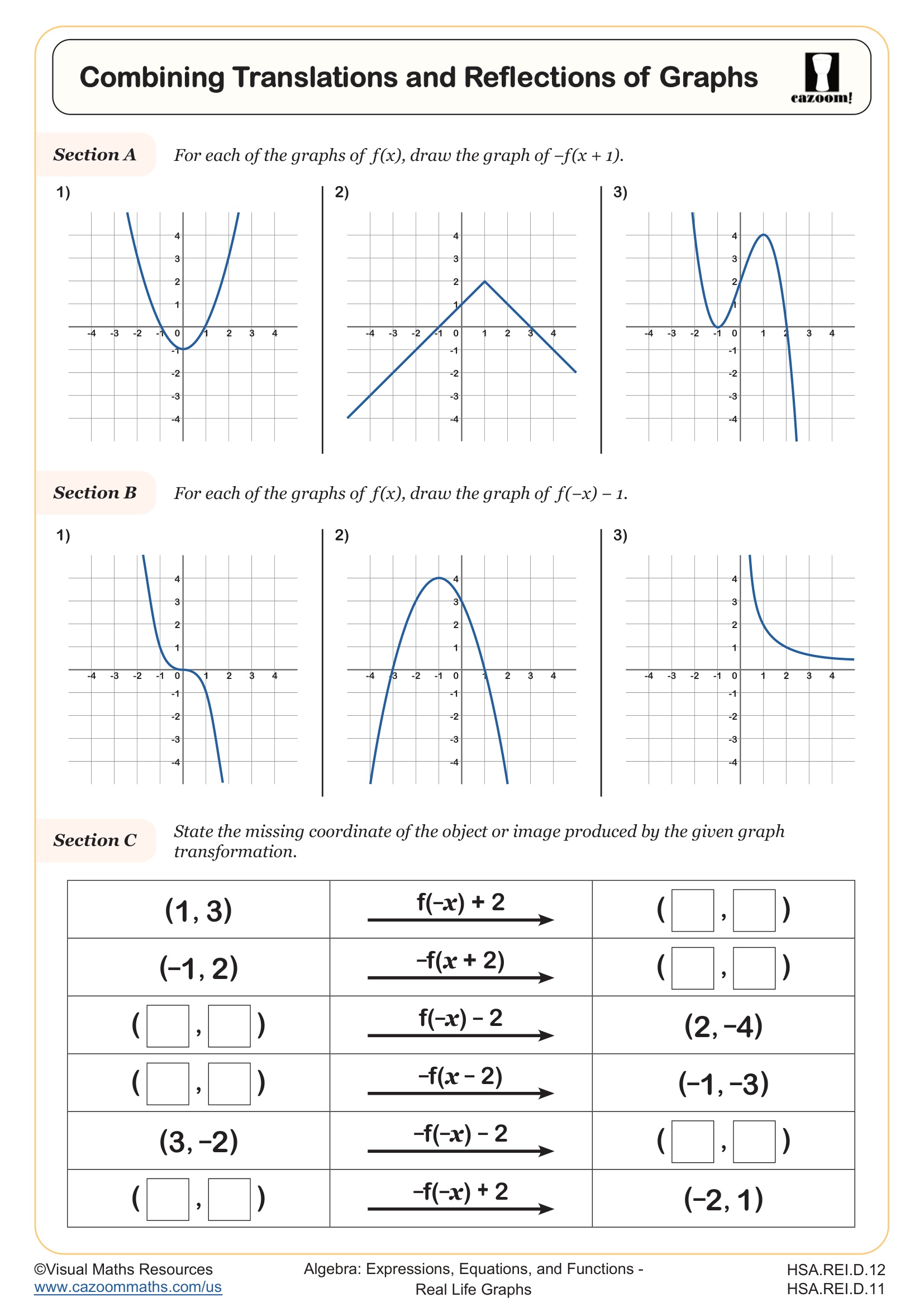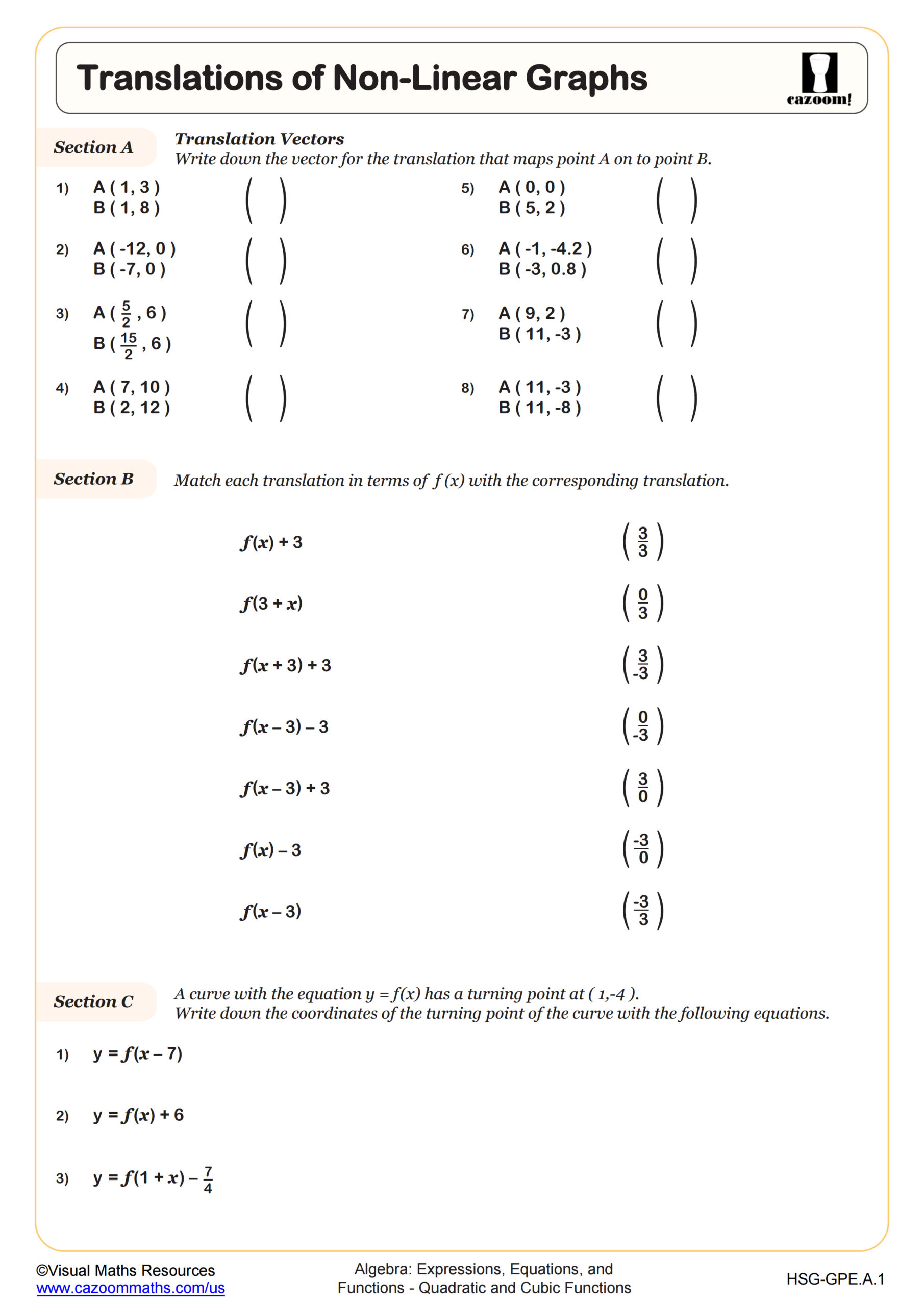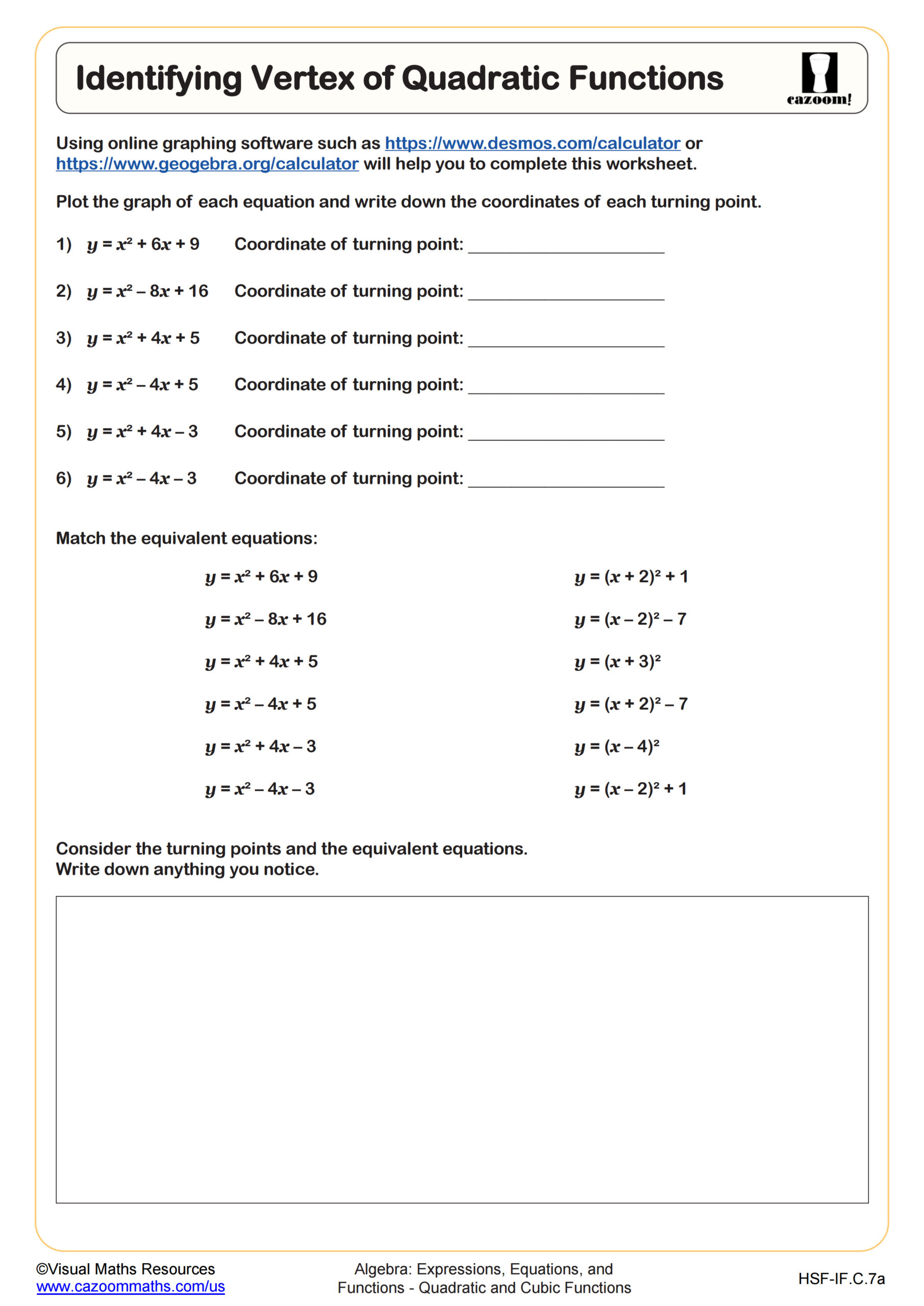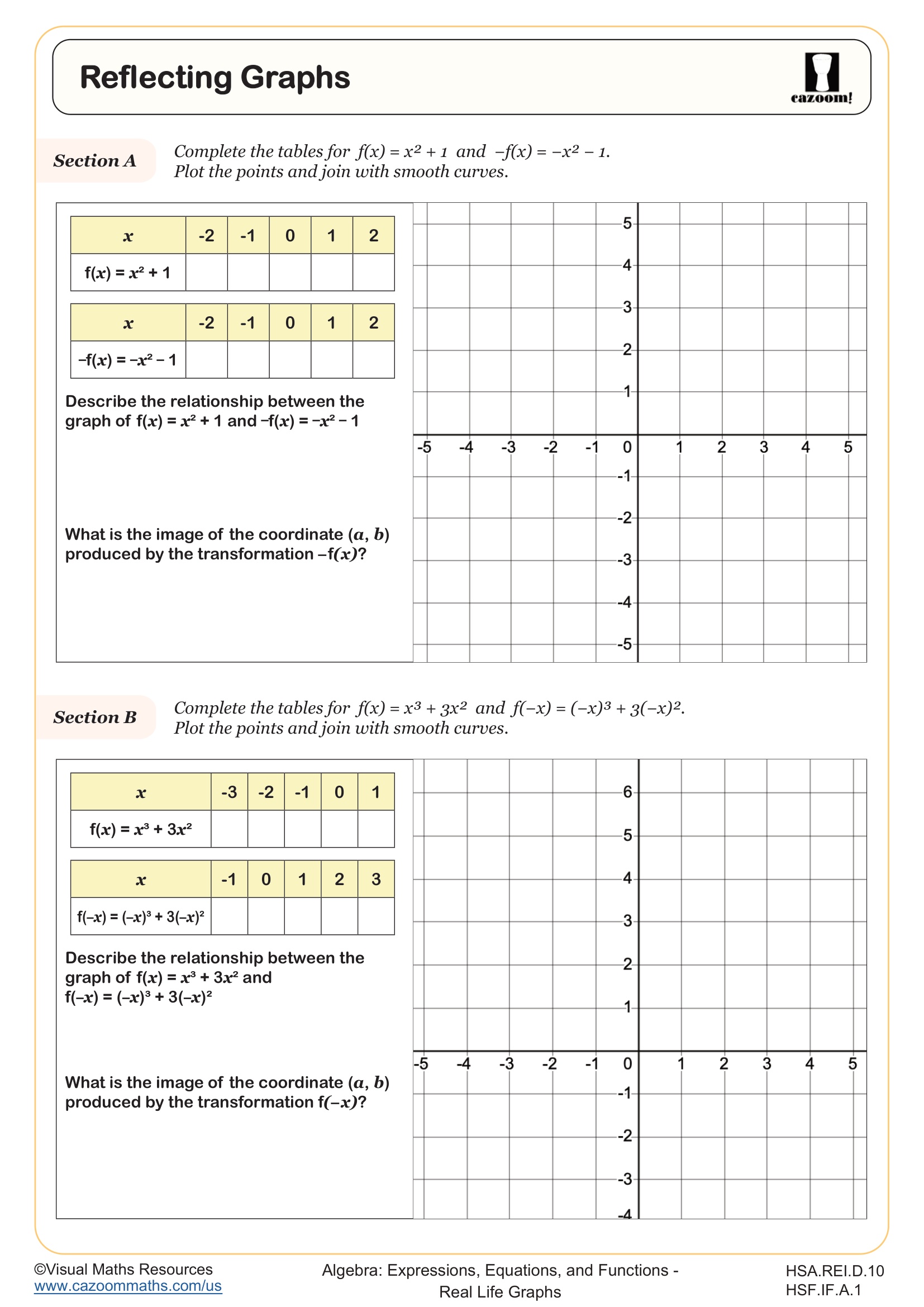Back to:
Combining Translations and Reflections of Graphs WORKSHEET
Suitable for Grades: Algebra II, IM 1
CCSS: HSA.REI.D.11, HSA.REI.D.12
CCSS Description: Explain why the x-coordinates of the points where the graphs of the equations y = f(x) and y = g(x) intersect are the solutions of the equation f(x) = g(x); find the solutions approximately, e.g., using technology to graph the functions, make tables of values, or find successive approximations. Include cases where f(x) and/or g(x) are linear, polynomial, rational, absolute value, exponential, and logarithmic functions.★
Graph the solutions to a linear inequality in two variables as a half-plane (excluding the boundary in the case of a strict inequality), and graph the solution set to a system of linear inequalities in two variables as the intersection of the corresponding half-planes.
Graph the solutions to a linear inequality in two variables as a half-plane (excluding the boundary in the case of a strict inequality), and graph the solution set to a system of linear inequalities in two variables as the intersection of the corresponding half-planes.
Combining Translations and Reflections of Graphs WORKSHEET DESCRIPTION
This worksheet follows on from Translating Graphs and Reflecting Graphs to combine two types of transformations. Section A asks learners to sketch a graph after a translation and then a reflection. Section B then asks for sketches of a reflection followed by a translation. Section C then focuses on coordinates before and after a combined transformation. Section D asks learners to match graphs to transformations given in function form and the worksheet ends with problems involving trigonometric graphs.



